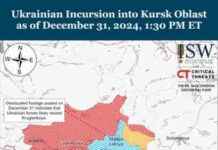Cyberattack Disrupts Russian Energy Giants: Gazprom Targeted
In a bold move that sent shockwaves through the digital landscape, cyber specialists from Ukraine’s Military Intelligence (HUR) orchestrated a sophisticated distributed denial-of-service (DDoS) attack on the digital infrastructure of Russian energy powerhouses Gazprom and Gazpromneft. The attack, as confirmed by a source within the intelligence agency to Kyiv Post, specifically targeted online services critical for supporting the operations of the Russian armed forces.
Since its onset on Tuesday, the repercussions of this cyber siege have reverberated far and wide, leaving customers of both Gazprom and its subsidiary Gazpromneft grappling with a slew of disruptions. Unable to access their personal accounts, utilize online services, make payments with fuel cards, or manage bonuses, Russian consumers found themselves at the mercy of an invisible adversary.
As the chaos unfolded, Gazprom acknowledged the disturbance, labeling it as a mere “technical glitch.” However, the energy giant has remained tight-lipped about a potential timeline for restoring the disrupted services, leaving many in a state of uncertainty and frustration.
A Tribute to Heroes: Unraveling the Motive Behind the Cyber Siege
Delving deeper into the motives behind this audacious cyberattack, a source within HUR shed light on the symbolic significance embedded within the digital onslaught. According to the insider, the attack was not merely an attempt to disrupt the status quo but a poignant tribute to Ukraine’s Heroes of the Battle of Kruty, who valiantly defied Russian forces in 1918.
Drawing a parallel between past and present-day acts of defiance, the source conveyed a powerful message of solidarity and remembrance. “Today’s problems for Russian drivers are a tribute to our brothers from 1918, the Heroes of Kruty, who stood against Muravyov’s criminal Russian gangs. Today, we continue the work of Kyiv’s defenders, both on the front lines and in cyberspace,” the source emphasized.
Revisiting History: The Legacy of HUR’s Cyber Intrusions
This recent cyber blitz is not the first instance of HUR flexing its digital prowess against Russian entities. In a daring move during the summer of 2024, HUR hackers unleashed a large-scale cyberattack on the Russian financial sector, plunging many Russian banks and government online resources into chaos for over a week.
Similarly, a prior HUR cyber incursion on January 4 targeted RegionTransService in Russia, a crucial cog in the country’s railway freight operations. The fallout from this attack was severe, with company servers being obliterated, a majority of workstations disabled, and all backup files wiped clean. The toll of the attack was significant, affecting 78 servers and 211 workstations, as reported by a source to RBC Ukraine.
The choice of Jan. 4 for the cyber onslaught was not arbitrary; it was a deliberate nod to the birthday of Kyrylo Budanov, the head of HUR. This calculated timing underscores the strategic nature of these cyber operations and the meticulous planning that goes into executing them.
Closing Thoughts: Navigating the Digital Battlefield
As the digital landscape continues to evolve, the battleground of cyberspace has emerged as a critical arena for geopolitical maneuvering and expressions of defiance. The recent cyber siege on Russian energy giants Gazprom and Gazpromneft serves as a stark reminder of the power wielded by cyber specialists in shaping the course of modern conflicts.
It also underscores the complex interplay between history, symbolism, and technological warfare, where acts of cyber aggression are imbued with layers of meaning that transcend mere disruption. As the digital frontier expands and evolves, one thing remains clear: the digital footprints of cyber warriors like HUR will continue to leave a lasting impact on the global stage.

















